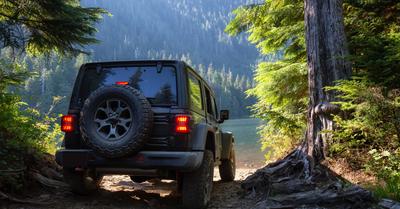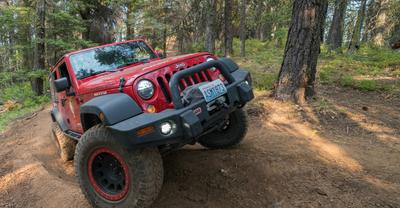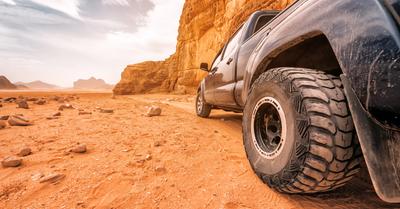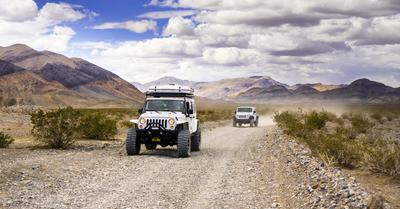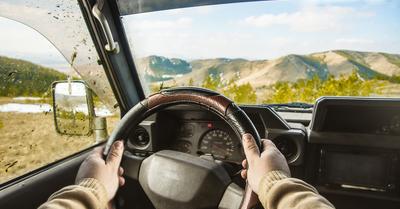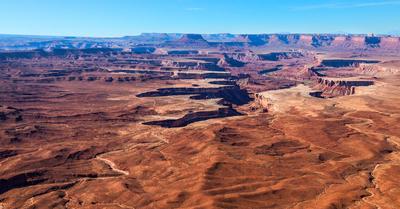Most off-roaders use 4WD vehicles. But what if you have a rear-wheel-drive or front-wheel-drive vehicle and want to use it off-road?
Rear-wheel drive vehicles can do a lot off-road (and did for decades before 4WD was widely available), provided they’re tough and have adequate ground clearance. Front-wheel-drive vehicles are rarely suitable for real off-roading.
In this article, we’ll go over what kinds of 2WD vehicles can be driven off-road, how well they work, and what to do to make them better. Additionally, we’ll cover the origins of off-roading in 2WD vehicles, why they worked, and why FWD vehicles shouldn’t be driven off-road in most situations.
We sourced this article from reputable off-roading guides, automotive history documentation, and the experience of the off-roading community.
This article may contain affiliate links where we earn a commission from qualifying purchases.
History of Off-Road 2WD Vehicles
The first mass-produced cars drove primarily off-road, as there weren’t a lot of paved roads in America at the time. These vehicles, namely the Ford Model T, were (and still are) some of the most capable off-road cars ever built. They’re lightweight and have a short wheelbase, and they drive on tall and skinny tires.
Another notable off-road vehicle was (surprisingly) the original Volkswagen Beetle. These vehicles, though primarily designed for highway travel, have been used extensively off-road in almost every country in the world. They’re especially good in the snow, as the engine sits directly above the rear-drive wheels.
During the 1940s and 1950s, farmers in America almost exclusively drove rear-wheel-drive pickup trucks. These vehicles had relatively high ground clearance and tall tires, which made them absorb bumps and ruts well. Additionally, they used a torque tube instead of a driveshaft, which protected internal components.
How did 2WD Vehicles Go Off-Road Before 4WD?
Before four-wheel-drive was widely available, almost all 2WD vehicles were rear-wheel-drive (RWD). Drivers had a few highly effective strategies to drive off-road. Farmers, in particular, would put normal highway tires on the front wheels and super-tready tractor-style tires on the rear wheels.
Tractor Tires
The rear tires had enormous paddle wheel-like tread blocks that effectively blasted through mud and loose dirt, and these vehicles rarely got stuck. The issue is that, on the highway, it would ride very poorly. Additionally, these tires are useless on wet roads.
Limited-Slip (Positraction) Differentials
Another common strategy was to install a limited-slip or ‘positraction’ differential. On a standard differential, known as an open diff, power is continuously applied primarily to one wheel. Limited-slip differentials can apply power selectively to one or both wheels, depending on which moves faster than the other.
In other words, these differentials can detect spin and apply power to the opposite wheel when it occurs, reducing the likelihood of getting stuck and helping you get unstuck. They also improve stability off-road, but they can cause problems when driving on ice or wet roads.
Locking Differentials
A locking differential can be locked manually at the driver’s will, which improves traction and helps you plow through mud and sand. Locking differentials are still a popular option on both 2WD and 4WD trucks, SUVs, and Jeeps.
Is Off-Roading in an Old RWD Vehicle Better?
In a way, off-roading in an old 2WD vehicle is better than doing it in a new one. Old 2WD vehicles, such as those produced before 1990, have fewer sensitive components and (generally) stronger suspension parts. Additionally, you’re more likely to have a manual transmission, which is a huge bonus for controlling a vehicle off-road.
Can You Off-Road in a New 2WD Vehicle?
Yes, you can go off-road in a new 2WD vehicle if you want to. There are a few 2WD vehicles on the market that are designed for off-roading, and most new 2WD trucks can handle off-road conditions.
The biggest challenges you’ll face are likely the computers designed to help you. Traction control, vehicle stability control, and anti-lock brakes are important safety features that work great on the highway—but more often than not, they get in the way off-road.
Sometimes you need to spin the tires, and sometimes locking up the brakes is the only way to stop on loose ground. Many people disable traction control and vehicle stability control when driving off-road to prevent the computers from getting them stuck.
Can You Off-Road in a FWD Vehicle?
So, you want to go off-roading in a front-wheel-drive vehicle. Can you do it? Sure—but you might not get very far. The answer to this question depends on what kind of off-roading you’re trying to do.
If you’re just cruising down gravel or well-graded dirt roads, you’ll probably be fine—just watch out for ruts. If you’re driving down a trail with rocks and obstacles, you’ll probably damage your car catastrophically.
The reason why you should avoid off-roading in a FWD vehicle is that the vast majority of FWD vehicles are low-profile road cars or vans with inadequate ground clearance and absolutely no underside protection.
These vehicles can be absolutely ruined by a rock smashing into the wrong place. And we mean totally trashed. Front-wheel-drive cars are too low to the ground to drive through deep snow or mud and too delicate to be bashed up underneath with rocks.
Rear-wheel-drive cars, such as old body-on-frame sedans, are much more robust off-road. Trucks have the biggest advantage due to their heavy-duty parts and high ground clearance, but sedans can often perform well provided they don’t get high-centered.
If I Want to Go Off-Roading, Should I Buy a 2WD?
These days, it’s best to buy a four-wheel-drive vehicle if you want to go off-roading. They’re usually better-equipped for dirt roads and a bit more robust and forgiving if you make a mistake. However, there are some 2WD vehicles you can off-road with confidence.
Old 2WD trucks perform just fine off-road most of the time. In other words, a 30 or 40-year-old half or 3/4-ton 2WD pickup will traverse about 85-90% of reasonable off-road situations without any trouble. But if you live in a particularly wet and muddy environment or if you want to do serious off-roading, a 4WD truck or Jeep is your best option.
What is a RWD Vehicle Good For?
A solid 2WD truck is a great choice if you do most of your driving on pavement and occasionally hit dirt roads. You’ll save fuel, have a lower initial cost, and have fewer complex parts to maintain over the years. These vehicles can be outfitted to perform well off-road, and you can install a winch for the occasional time you get stuck in the mud or snow.
What is a FWD Vehicle Good For?
Front-wheel-drive vehicles are great for paved roads. They’re more stable, they get better fuel economy, and they’re safer to drive on icy roads and during the winter. However, they simply aren’t suited for off-roading—and just because some people do it doesn’t mean it’s a good idea.


